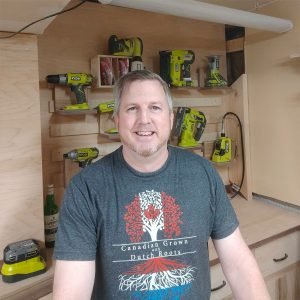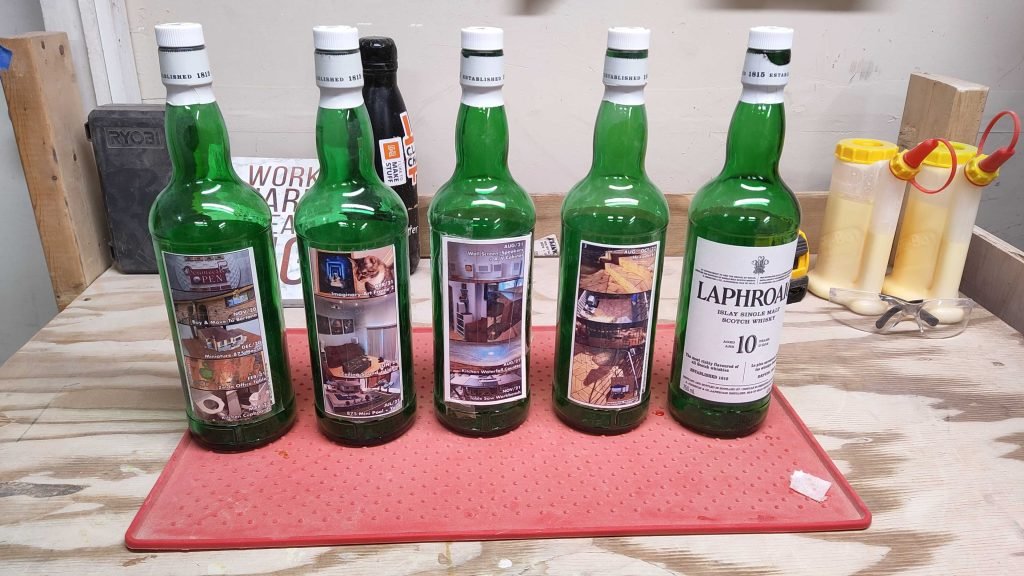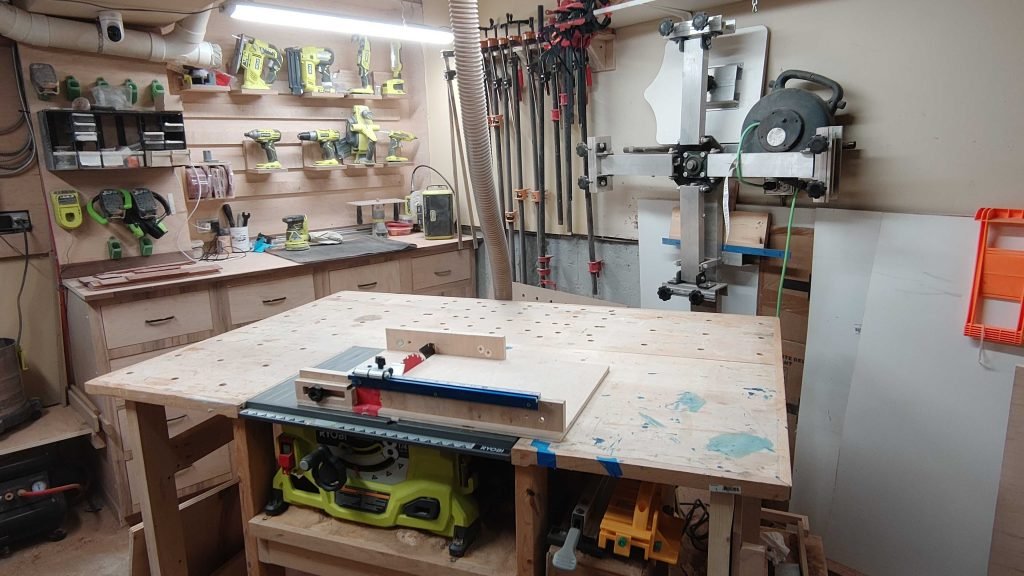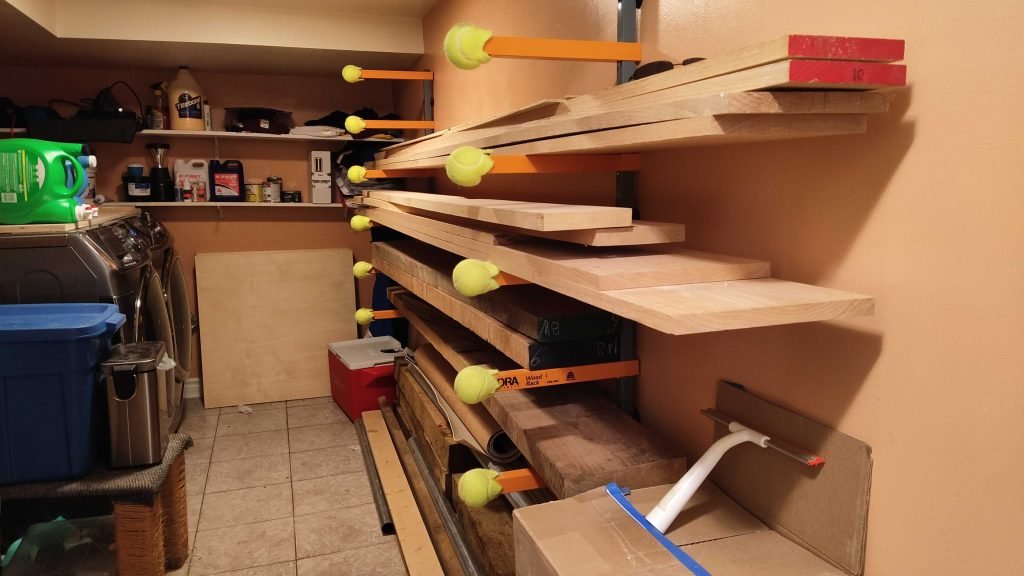About Idealien Studios
Discover the person and place
where the personalized creations are made
Idealien Studios is the maker business of Jamie Oastler. As you can see from the product gallery, there are a breadth of materials, tools and skills that he can work with to deliver projects large and small. Throughout the design, build and delivery phases of a project, he applies a creative approach to ensure the ideal result with his time spent in the workshop and for the products delivered to the customer.
My Maker History

Making was a small hobby for the first few decades of my life and one I initially would feel underwhelmed by what I was able to create. Like so many people, I didn’t recognize the discrepancy between my tastes and my skills would only be narrowed through practice, experimentation and learning from failures. With more of my time/focus spent outside the workshop, including building a career as a web developer which was where the name for Idealien Studios originally started, the process of shrinking that discrepancy was slow going.
When covid hit in the early 2020’s, and many people began to work on their sourdough starter recipes, I dove deeper into crafting as a hobby. Coming out of the lockdown period of that pandemic, I built the Zelda Table as something of a challenge to myself. While it wasn’t the biggest physical project I’d ever created, the combination of detail and variety of materials required in it certainly was. The feedback from friends, family and fellow makers about it highlighted that I had arrived at a point where my maker skills could mostly keep up with my artistic ambitions.
A few months later I decided to join the Maker Alliance. The increasing frequency of posts published into my build blog, whether delivered for customers or personal projects, is testament to the value I have found from being a part of that community. It fosters a supportive environment for sharing interests, challenges, hobbies in addition to being able to bounce ideas around what, and how, to make. The collective breadth and depth of skills shared there continues to amaze me.
I look forward to the next projects which I create as I continue to hone my maker skills. If you see something on this website that you might like built for you as a customer, or it sparks questions for how you might make something similar for yourself, I’d encourage you to get in touch.
Cheers,
Jamie
The Studios
My mental image of an ‘artists studio’ probably lands closer to gallery than studio, with large white walls which only purpose is to display art/items for sale. I have very little of that, but thankfully that’s not what the definition of a studio actually is.
A studio is room where an artist, photographer, sculptor, etc. works.
Aside from the home office, where most of the digital/design work happens, tools are split into two work spaces mostly based on how much sawdust or mess they have a chance to make. Eventually I’ll get a ‘studio tour’ set of photos prepared, but it seems every time I get things close to clean enough to photograph, I dive into another project.
Main Workshop
Wood projects can start here as rough sawn lumber. With a jointer/planer on a rolling flip-top cart and mix of saws (band, mitre, table, circular ney track) I can square up or break down most wood sizes for project use. All screen printing projects are done here and clean-up just through the door in a mudroom/slop sink. Most epoxy work will start/finish here as well, although during the winter months some do migrate inside.
Basement Workspace
For projects that either benefit from a temperature controlled environment, or don’t produce as much airborne mess as the wood tools, the basement is a small but mighty work area. The workflow switches around in the space often depending on if I’m doing laser projects, 3D print, sublimation/heat press or mixed media projects.
The Liminal/Storage space
In between the two workspaces are a set of stairs and short (height) space that a real-estate agent might pitch as mudroom or laundry room. It certainly is that, but the combination of slop sink and extra storage options has allowed it to hold a decent wood rack, screen print screens, plus any paints/finishes/glues that don’t do well with winter cold in the garage. The connecting stairs to basement also have one of my favorite prints about diving into creativity from The Imaginary Foundation.
What is an Idealien?

The name of Idealien Studios was chosen based on two very disconnected concepts when launching the domain originally related to freelance web development and consulting services.
- I would hear people say, “The ideal this we should do is…” The idea of building or offering the ideal product or service appealed as a concept.
- I found this cute alien graphic and something about it just really spoke to me.
So I attempted to blended them together:
Ideal + Alien = Ideal-ien = Idealien
and people have been struggling to figure out how to pronounce it ever since.
Celebrating Progress!

For many years, including well before I had ambitions for making to be anything more than a hobby, I found a small glass of Laphroaig whisky to be an excellent way to conclude a trip, social event or DIY project. A little bit of a “stop and smell the roses” approach – only in this case it’s the strong smokey/peaty notes found in this scottish Aqua Vitae (water of life).
A couple of years ago I decided to start keeping the empty bottles which would typically last 9-12 months depending on the number of projects and times when I called upon extra hands for larger efforts like the Hex-A-Deck build. The idea has grown to become something of a full circle positive reinforcement loop with the top shelf whiskey bottles living on a top shelf of the workshop:
- When a project has been completed or a major milestone made along the way:
I pour myself a glass to celebrate the progress/success and note what the project was on the back label. - When a bottle gets to empty:
I pull photos for them into a template that fits over the back label and add it to the top shelf. - When a project seems to be a struggle to figure out the process or mistakes were made:
I can look up and see see reminders of other projects that had their struggles and still did succeed. - When a project seems like it is taking forever to complete:
The photos that adorn their labels are a quick reference to how long even bigger or more ambitious projects took and they did get done. This too shall pass. - When a project seems like it is flying by in absolute efficiency:
I know that will not always be the case and should not get complacent.
Best enjoy the flow state of a project build, and the celebratory glass of whiskey, while it lasts.









